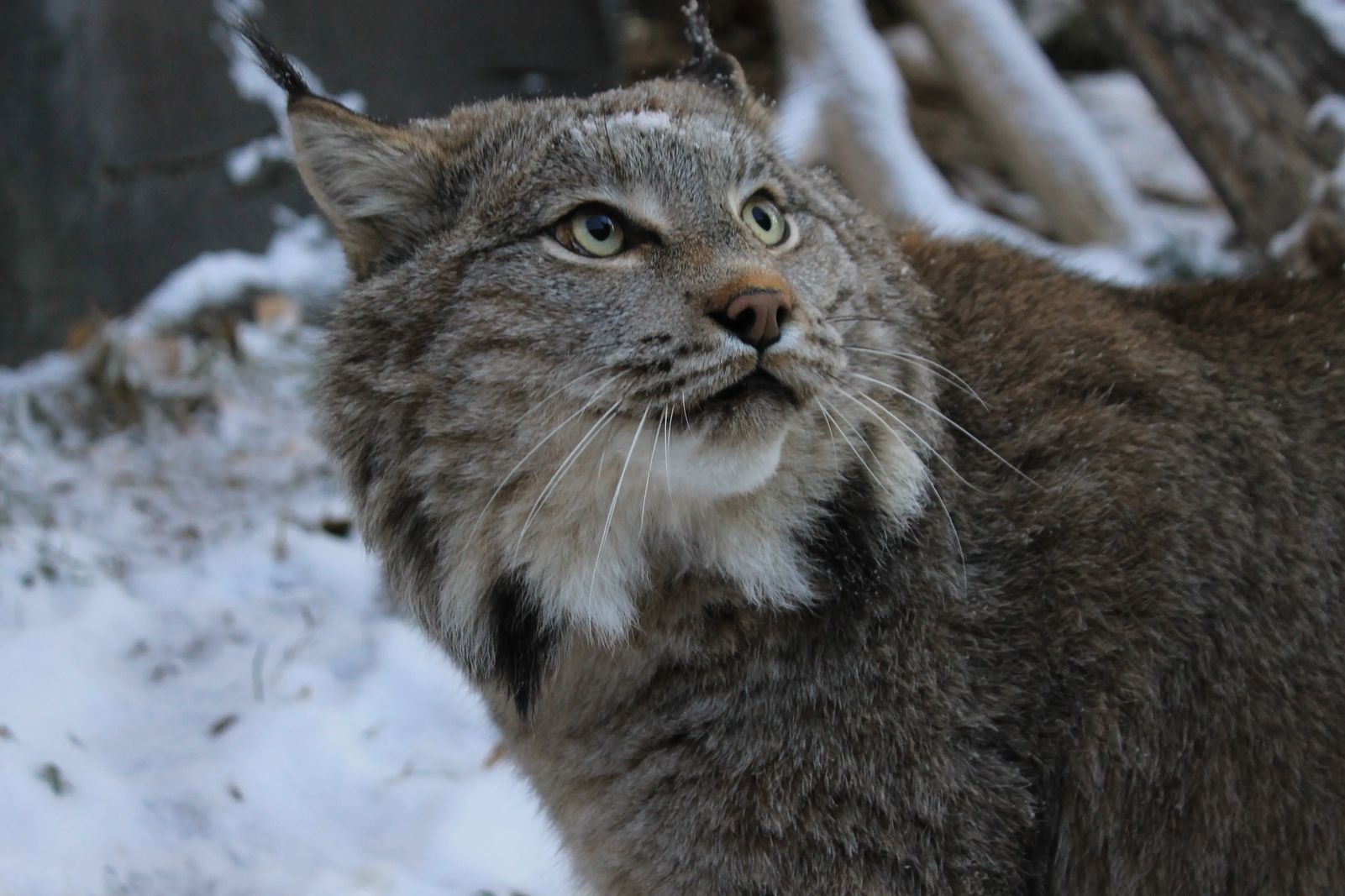Canada Lynx
Lynx canadensis
Canada lynx are commonly found throughout Canada and Alaska, but in the lower forty-eight states, they can only be found in eastern Montana, parts of Idaho, and Washington. Their coloration may vary, but normally they are a grayish-brown color all over, with pointed ears with black tufts sticking up, and an extremely short tail. The lynx almost exclusively preys on the snowshoe hair and their population will fluctuate whenever snowshoe hair populations rise and fall. They have many different adaptations that help with hunting and survival which include large paws that act as snowshoes, thick fur to keep warm in the winter, and ear tufts to help them channel sound. There are a total of four different subspecies of lynx which include the Canada lynx, the Eurasian lynx, the Spanish lynx, and the bobcat.
Click HERE for a Canada Lynx Activity Sheet!
Our Current Residents
Fierca, Female - Born May 1, 2011
Fierca is one of the many animals that was surrendered as pets here at the zoo. Fierca came to ZooMontana in 2011 when she was only a few months old. Since Fierca was raised by humans, she has been more accustomed to humans than other animals. Fierca does camouflage well in her habitat so it may be a bit difficult to see her. Some of the best times to find her are early in the morning when the Zoo opens or later in the day before the zoo closes.
Taxonomy
- Kingdom: Animalia
- Phylum: Chordata
- Class: Mammalia
- Order: Carnivora
- Family: Felidae
- Genus: Lynx
- Species: Lynx canadensis
Animal Facts
Carnivore: mainly eat snowshoe hair
Population Status (according to IUCN): currently listed as Least Concern
Montana Population Status (according to Montana Field Guide): currently listed as Species of Concern
Habitat: open forests, rocky areas, or tundra
Activity: nocturnal- mostly active during the night




















































